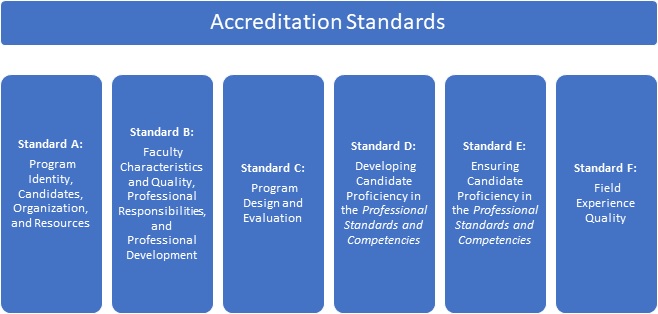Trump's Executive Order: Reshaping Higher Education Accreditation

Table of Contents
The Core Aims of the Executive Order
The stated goals of Trump's Executive Order on Higher Education Accreditation centered on deregulation and increased choice for students. The administration argued that excessive federal regulation stifled innovation and competition within higher education, ultimately harming students. The order aimed to streamline the accreditation process, reduce bureaucratic burdens on institutions, and empower students with more transparent information.
- Reduce the regulatory burden on institutions: The executive order sought to lessen the compliance requirements placed on colleges and universities by accrediting agencies, freeing up resources for teaching and research.
- Increase competition among accrediting agencies: By promoting competition, the order aimed to foster innovation and potentially lower costs for institutions. The theory was that a more competitive market would lead to better services and more efficient processes.
- Empower students with more information about program quality and cost: The order emphasized the importance of providing students with readily accessible data on program outcomes, costs, and debt burdens. This aimed to enhance transparency and student choice.
- Promote innovation in higher education: By reducing regulatory hurdles, the executive order aimed to encourage experimentation and the development of new educational models and programs.
Impact on Accreditation Agencies
Trump's Executive Order significantly altered the roles and responsibilities of accrediting agencies. The increased focus on deregulation shifted the balance of power, placing greater emphasis on market forces and potentially diminishing the influence of traditional accreditation bodies.
- Increased scrutiny of accrediting agencies' processes: The executive order subjected accrediting agencies to greater oversight and accountability, leading to reviews of their procedures and standards.
- Potential changes to accreditation standards and criteria: The order indirectly influenced the criteria used by accrediting agencies to evaluate institutions, potentially leading to shifts in priorities and emphasis.
- Impact on the financial stability of accrediting agencies: The changes introduced by the executive order had a ripple effect, impacting the revenue streams and financial stability of some accrediting agencies.
- Increased competition and potential mergers among agencies: The drive towards deregulation led to increased competition and, in some cases, mergers and acquisitions among accrediting agencies.
Challenges to Traditional Accreditation Models
The executive order presented significant challenges to traditional accreditation models. The long-standing processes and structures were challenged by the administration's focus on deregulation and market-based solutions.
- Debate over the effectiveness of current accreditation practices: The executive order fueled a broader debate about the efficacy of established accreditation practices and their ability to ensure quality and accountability in higher education.
- Concerns about potential loss of academic rigor: Critics argued that reducing regulatory oversight could compromise academic rigor and potentially lead to a decline in educational standards.
- The role of federal oversight in maintaining quality standards: The executive order sparked discussions about the appropriate level of federal involvement in maintaining quality standards in higher education, raising questions about the balance between government regulation and institutional autonomy.
Consequences for Students and Institutions
The consequences of Trump's Executive Order on Higher Education Accreditation were far-reaching, impacting both students and institutions.
- Increased tuition costs due to reduced regulation: Some argued that decreased regulation could lead to increased tuition costs as institutions faced less pressure to control expenses.
- Potential for lower academic standards in some programs: Concerns arose that reduced oversight might lead to a decline in academic standards in certain programs.
- Impact on federal student aid eligibility: Changes to accreditation standards could have affected students' eligibility for federal student aid and loan programs.
- Changes in the college application process: The altered landscape of accreditation could have implications for the college application process and the information available to prospective students.
The Political Context and Controversy
Trump's Executive Order on Higher Education Accreditation was deeply intertwined with the broader political context of the time. It sparked significant controversy and opposition.
- Opposition from higher education associations: The order faced considerable pushback from higher education associations and organizations, who voiced concerns about its potential negative consequences.
- Arguments for and against deregulation of higher education: The order ignited a vigorous debate about the merits and drawbacks of deregulation in higher education, highlighting fundamental disagreements about the role of government and the market in shaping educational policy.
- Long-term effects on the accessibility and affordability of higher education: The long-term impact of the executive order on the accessibility and affordability of higher education remained a significant point of contention and debate.
- Legal challenges to the executive order (if any): While there may not have been widespread legal challenges directly to the order itself, the changes it spurred within the accreditation landscape certainly initiated various legal and regulatory disputes at the institutional level.
Conclusion
President Trump's Executive Order on Higher Education Accreditation represents a significant attempt to reshape the landscape of American higher education. While aimed at increasing choice and reducing regulatory burdens, the order sparked considerable debate regarding its potential impact on academic quality, affordability, and student outcomes. The long-term consequences remain to be seen, but the order undeniably altered the dynamics of accreditation and the relationship between the federal government and higher education institutions.
Call to Action: Understanding the intricacies of Trump's Executive Order on Higher Education Accreditation is crucial for navigating the evolving landscape of higher education. Further research into the ongoing effects of this order is encouraged to fully grasp its impact on students, institutions, and the future of accreditation. Staying informed about updates and changes in higher education policy, particularly those concerning accreditation standards and regulations, is essential for students, educators, and policymakers alike.

Featured Posts
-
 Chinas Xi Raising The Stakes For A Prolonged Us Confrontation
Apr 25, 2025
Chinas Xi Raising The Stakes For A Prolonged Us Confrontation
Apr 25, 2025 -
 Montana Senate Control Dems And Gop Coalition Dynamics
Apr 25, 2025
Montana Senate Control Dems And Gop Coalition Dynamics
Apr 25, 2025 -
 Politicheskie Posledstviya Vizita Kota Kelloga V Ukrainu 20 Fevralya
Apr 25, 2025
Politicheskie Posledstviya Vizita Kota Kelloga V Ukrainu 20 Fevralya
Apr 25, 2025 -
 Accidental Shooting Of 4 Year Old In Huntsville Wrongful Death Lawsuit Filed
Apr 25, 2025
Accidental Shooting Of 4 Year Old In Huntsville Wrongful Death Lawsuit Filed
Apr 25, 2025 -
 Trumps Shadow Looms Large Over Canadas Election
Apr 25, 2025
Trumps Shadow Looms Large Over Canadas Election
Apr 25, 2025
Latest Posts
-
 Germanys Spd Coalition Negotiations Amid Youth Protests
Apr 30, 2025
Germanys Spd Coalition Negotiations Amid Youth Protests
Apr 30, 2025 -
 Meet Remember Monday Uk Eurovision 2025 Representatives
Apr 30, 2025
Meet Remember Monday Uk Eurovision 2025 Representatives
Apr 30, 2025 -
 Eurovision 2025 Getting To Know Remember Monday
Apr 30, 2025
Eurovision 2025 Getting To Know Remember Monday
Apr 30, 2025 -
 United Kingdoms Eurovision 2025 Hopefuls Remember Monday
Apr 30, 2025
United Kingdoms Eurovision 2025 Hopefuls Remember Monday
Apr 30, 2025 -
 Who Are Remember Monday Meet The Uks Eurovision 2025 Entry
Apr 30, 2025
Who Are Remember Monday Meet The Uks Eurovision 2025 Entry
Apr 30, 2025
